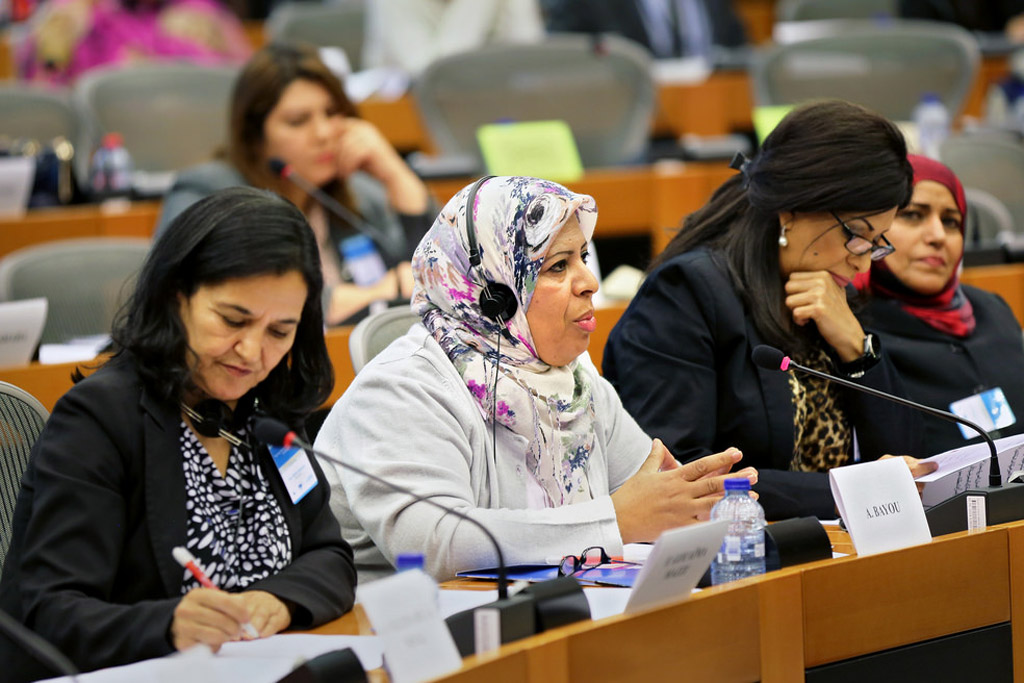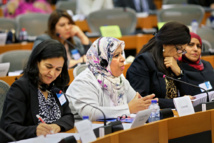United States – 09 April 2015 – The latest map of “Women in Politics” launched by the United Nations is a reflection of the “sluggish progress” made by women on this field.
The “Women in Politics” Map of 2015 was launched at the headquarters of the United Nations on 10 March 2015. The said map is a testimony to the fact that, even though, the world speak much about gender equality and showcases the achievements of women in various fields competing worldwide with men. However, the bare reality revealed by the U.N. political map shows quite the contrary, wherein the participation of women in public or political fields are moving at an extremely slow pace as compared to the opposite gender’s involvements.
The launching of the political map regarding women involvement in the afore mentioned platform, has become a warning bell to the U.N. representatives along with the IPUs or “the Inter-parliamentary Union” as such “sluggish progress” will check the U.N. development agenda which will be implemented shortly.
Phumzile Mlambo-Ngcuka, the director of United Nations Women, urged for “renewed commitments and investments” in order to match the required target to balance gender equality which was announced way back in 1995 at “the Beijing Platform for Action”. She says:
The “Women in Politics” Map of 2015 was launched at the headquarters of the United Nations on 10 March 2015. The said map is a testimony to the fact that, even though, the world speak much about gender equality and showcases the achievements of women in various fields competing worldwide with men. However, the bare reality revealed by the U.N. political map shows quite the contrary, wherein the participation of women in public or political fields are moving at an extremely slow pace as compared to the opposite gender’s involvements.
The launching of the political map regarding women involvement in the afore mentioned platform, has become a warning bell to the U.N. representatives along with the IPUs or “the Inter-parliamentary Union” as such “sluggish progress” will check the U.N. development agenda which will be implemented shortly.
Phumzile Mlambo-Ngcuka, the director of United Nations Women, urged for “renewed commitments and investments” in order to match the required target to balance gender equality which was announced way back in 1995 at “the Beijing Platform for Action”. She says:
“If today’s leaders front-load gender equality, if they start now to make good on those 20-year-old promises, we can look forward to gender equality by 2030 at the latest”.
The United Nations Women was a creation of 2010 which took place under the guidance of Ban Ki-moon, the Secretary General of U.N. On 10 March 2015, the said branch of U.N. launched the map of “Women in Politics” 2015 in unison with the Inter Parliamentary Union at both the headquarters of the United Nations in New York and Geneva.
The data from this joint venture unfurls “a mixed picture” which was obtained from a data collection of “global ranking” of women political figures and the involvement of the said gender in political fields. According to its findings, in about forty eight countries there is a thirty percent ratio of “women members in at least one parliamentary chamber”. However, the previous records show that in 2013 only forty countries had such high women members in the parliament whereas in 2014 the number of countries rose by only four.
The IPU and the U.N. Women inform:
“The global average for women MPs also reached its highest ever level to above 22 percent. However, that growth was a disappointing 0.3 percentage points and followed the record level of increase (1.5 points) during 2013, suggesting that the impact of quotas was wearing off.”
The Map enlists in detail the global ‘snail paced’ progress of bringing the women population into political field. Even though the number of countries, having women parliamentary figures, have increased, yet there are still eight countries, namely Tonga, Pakistan, Brunei, Bosnia Herzegovina, Vanuatu, Slovakia, Hungary and Saudi Arabia, wherein the political doors for women haven’t opened so far.
As per the joint press release:
“The snail’s pace of progress on gender equality and women’s participation in public and political life will need to be tackled head-on” for the overall success of the new sustainable development agenda taking over from the Millennium Development Goals this year”.



















